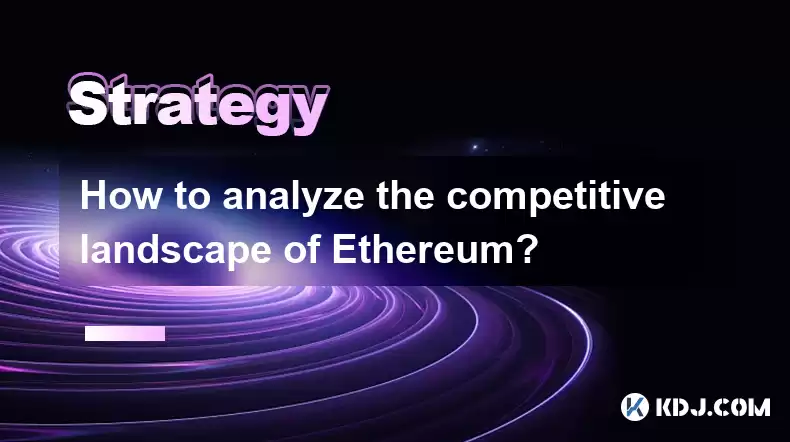-
 Bitcoin
Bitcoin $119000
2.02% -
 Ethereum
Ethereum $4233
-0.58% -
 XRP
XRP $3.182
-1.09% -
 Tether USDt
Tether USDt $1.000
-0.01% -
 BNB
BNB $804.0
0.52% -
 Solana
Solana $183.2
1.27% -
 USDC
USDC $0.9998
0.00% -
 Dogecoin
Dogecoin $0.2335
-2.82% -
 TRON
TRON $0.3384
0.95% -
 Cardano
Cardano $0.8003
-0.61% -
 Hyperliquid
Hyperliquid $45.12
1.98% -
 Chainlink
Chainlink $22.14
3.65% -
 Stellar
Stellar $0.4440
-0.46% -
 Sui
Sui $3.858
-1.36% -
 Bitcoin Cash
Bitcoin Cash $569.6
-0.25% -
 Hedera
Hedera $0.2578
-2.58% -
 Ethena USDe
Ethena USDe $1.001
-0.03% -
 Avalanche
Avalanche $23.76
-3.06% -
 Litecoin
Litecoin $123.7
2.27% -
 Toncoin
Toncoin $3.337
-1.91% -
 UNUS SED LEO
UNUS SED LEO $9.051
0.54% -
 Shiba Inu
Shiba Inu $0.00001355
-1.80% -
 Uniswap
Uniswap $10.90
-0.84% -
 Polkadot
Polkadot $4.047
-1.93% -
 Dai
Dai $1.000
0.00% -
 Cronos
Cronos $0.1628
3.51% -
 Ethena
Ethena $0.7833
5.35% -
 Bitget Token
Bitget Token $4.447
-1.73% -
 Pepe
Pepe $0.00001201
-3.46% -
 Monero
Monero $268.2
-3.37%
How to analyze the competitive landscape of Ethereum?
Ethereum's dominance in the smart contract platform market is challenged by emerging layer-1 blockchains, layer-2 scaling solutions, and increasing enterprise adoption.
Feb 25, 2025 at 05:49 am

Key Points:
- Market Share and Dominance: Ethereum is the dominant smart contract platform in the blockchain industry with the highest market share. Analyze the platform's market share, user base, and transaction volume to assess its competitive position.
- Ecosystem and DApp Strength: Ethereum boasts a vast ecosystem of decentralized applications, protocols, and services. Examine the diversity, quality, and user adoption of these DApps to gauge Ethereum's attractiveness to developers and users.
- Competition from Layer-1 Blockchains: Several new layer-1 blockchains, such as Solana, Avalanche, and Polygon, have emerged as potential competitors to Ethereum. Analyze their scalability, transaction speeds, fees, and ecosystem development to assess their competitive threats.
- Layer-2 Scaling Solutions: Ethereum's scalability limitations have led to the development of layer-2 scaling solutions such as Polygon, Optimism, and Arbitrum. Explore these solutions' adoption rates, transaction volumes, and developer support to evaluate their impact on Ethereum's competitive landscape.
- Enterprise Adoption and Partnerships: Enterprises are increasingly adopting blockchain technology for various use cases. Analyze Ethereum's presence in enterprise solutions, partnerships with technology giants, and regulations to assess its adaptability to institutional adoption.
Detailed Analysis:
1. Market Share and Dominance
Ethereum holds a commanding market share in the smart contract platform market, representing over 50% of the total market capitalization. Its high transaction volume, active user base, and established ecosystem contribute to its dominance. However, the emergence of new layer-1 blockchains may challenge Ethereum's market dominance in the future.
2. Ecosystem and DApp Strength
Ethereum has a vibrant and diverse ecosystem with a vast array of decentralized applications. DeFi, NFTs, gaming, and enterprise solutions are among the popular use cases on the platform. The quality, adoption rate, and developer support for these DApps are crucial indicators of Ethereum's competitive advantage.
3. Competition from Layer-1 Blockchains
Solana, Avalanche, and Polygon are notable layer-1 blockchains that present competition to Ethereum. Solana boasts high scalability and low transaction fees, while Avalanche offers faster consensus and smart contract execution. Polygon provides enterprise-grade scaling solutions and a large ecosystem of dApps. Analyze their strengths, weaknesses, and market penetration to understand their competitive threats to Ethereum.
4. Layer-2 Scaling Solutions
Layer-2 solutions like Polygon, Optimism, and Arbitrum have emerged to address Ethereum's scalability limitations. They offer improved transaction speeds and lower fees while maintaining compatibility with the Ethereum mainnet. Assess the adoption rates, user experience, and developer support for these solutions to determine their impact on Ethereum's competitive landscape.
5. Enterprise Adoption and Partnerships
Enterprise adoption is a key factor in the long-term success of any blockchain platform. Ethereum has seen growing interest from technology giants, financial institutions, and government agencies. Partnerships with these entities can enhance Ethereum's legitimacy, broaden its use cases, and facilitate regulatory compliance.
FAQs:
What are the primary factors influencing Ethereum's competitive landscape?
- Market share, ecosystem strength, competition from other blockchains, layer-2 scaling solutions, and enterprise adoption.
Which layer-1 blockchains pose the greatest competitive threat to Ethereum?
- Solana, Avalanche, and Polygon are notable competitors with distinct advantages in scalability, speed, and ecosystem development.
How do layer-2 scaling solutions impact Ethereum's competitiveness?
- They enhance Ethereum's scalability, reduce transaction fees, and attract developers, but they also introduce potential complexities and security risks.
What is the significance of enterprise adoption for Ethereum?
- Enterprise adoption can legitimize the platform, expand its use cases, facilitate regulatory compliance, and drive long-term growth.
What factors should be considered when evaluating Ethereum's ecosystem?
- Diversity, quality, user adoption, developer support, and DApp categories are key metrics for assessing the strength of the Ethereum ecosystem.
Disclaimer:info@kdj.com
The information provided is not trading advice. kdj.com does not assume any responsibility for any investments made based on the information provided in this article. Cryptocurrencies are highly volatile and it is highly recommended that you invest with caution after thorough research!
If you believe that the content used on this website infringes your copyright, please contact us immediately (info@kdj.com) and we will delete it promptly.
- LYNO AI & XRP: Decoding the ROI Potential in a Shifting Crypto Landscape
- 2025-08-11 04:30:11
- Cryptos on the Cusp: Cold Wallet, Price Breakouts, and What's Hot Now
- 2025-08-11 04:50:11
- Dogecoin, Meme Coins, and Remittix Utility: What's the Hype?
- 2025-08-11 04:50:11
- Sky Bet, ESPN, and the Spartans Bonus: A Betting Landscape Overview
- 2025-08-11 05:11:16
- Altcoin Buyouts & Market Removals: Crypto Development's Wild Ride
- 2025-08-11 04:30:11
- Bitcoin Banks Arrive: El Salvador's Bold Play with Investment Banks and Crypto
- 2025-08-11 04:55:12
Related knowledge

How to use stop-loss orders to limit potential losses?
Aug 08,2025 at 02:01pm
Understanding Stop-Loss Orders in Cryptocurrency TradingA stop-loss order is a risk management tool used by traders to automatically sell a cryptocurr...

What are the most promising altcoins to invest in?
Aug 10,2025 at 11:42am
Understanding the Role of Private Keys in Cryptocurrency WalletsIn the world of cryptocurrency, private keys are the cornerstone of ownership and cont...

How to read cryptocurrency charts and use technical analysis?
Aug 08,2025 at 11:08am
Understanding the Basics of Cryptocurrency ChartsCryptocurrency charts are graphical representations of price movements over time. These charts are es...

What is the difference between long-term holding (HODLing) and short-term trading?
Aug 10,2025 at 05:30pm
Understanding HODLing in the Cryptocurrency SpaceThe term HODL originated from a typo in a 2013 Bitcoin forum post and has since become a widely accep...

How to do your own research (DYOR) before investing in a crypto project?
Aug 08,2025 at 09:07pm
Understanding the Core Principles of DYOR in CryptocurrencyEngaging in due diligence before investing in any cryptocurrency project is essential to mi...

How to build a diversified crypto portfolio?
Aug 09,2025 at 12:21pm
Understanding the Importance of Diversification in CryptoDiversification in the cryptocurrency space is a strategy used to reduce risk by spreading in...

How to use stop-loss orders to limit potential losses?
Aug 08,2025 at 02:01pm
Understanding Stop-Loss Orders in Cryptocurrency TradingA stop-loss order is a risk management tool used by traders to automatically sell a cryptocurr...

What are the most promising altcoins to invest in?
Aug 10,2025 at 11:42am
Understanding the Role of Private Keys in Cryptocurrency WalletsIn the world of cryptocurrency, private keys are the cornerstone of ownership and cont...

How to read cryptocurrency charts and use technical analysis?
Aug 08,2025 at 11:08am
Understanding the Basics of Cryptocurrency ChartsCryptocurrency charts are graphical representations of price movements over time. These charts are es...

What is the difference between long-term holding (HODLing) and short-term trading?
Aug 10,2025 at 05:30pm
Understanding HODLing in the Cryptocurrency SpaceThe term HODL originated from a typo in a 2013 Bitcoin forum post and has since become a widely accep...

How to do your own research (DYOR) before investing in a crypto project?
Aug 08,2025 at 09:07pm
Understanding the Core Principles of DYOR in CryptocurrencyEngaging in due diligence before investing in any cryptocurrency project is essential to mi...

How to build a diversified crypto portfolio?
Aug 09,2025 at 12:21pm
Understanding the Importance of Diversification in CryptoDiversification in the cryptocurrency space is a strategy used to reduce risk by spreading in...
See all articles

























































































